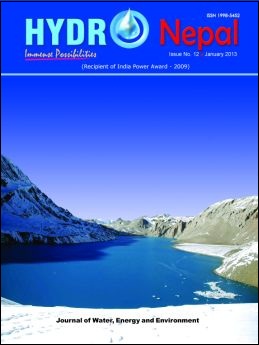World Bank’s 2012 Ganges Strategic Basin Assessment: A View from Nepal
DOI:
https://doi.org/10.3126/hn.v12i0.9025Keywords:
Ganges Strategic Basin Assessment (GSBA), World Bank, Treaty, NepalAbstract
The World Bank’s 2012 Ganges Strategic Basin Assessment (GSBA) is an interesting but contentious document with a wealth of information. The basin has a population of 656 million; and 47 percent of Indians, 576 million, live in this basin. Nepal’s three bordering States of Uttar Pradesh, Bihar and West Bengal with a population of 199, 104 and 91 million respectively have a staggering combined population of 385 million, far greater than that of the USA. The Ganges basin has the world’s highest population density and, as a consequence, poverty level borders that of Sub-Sahara. This is India’s Hindu cow belt where water is increasingly getting scarce.
With the strategic resource, water, getting scarce in the Ganges, the Bank’s GSBA has some startling findings: storages in Nepal store ‘significantly little’ water, so flood control in India is ‘very limited’. Storages in Nepal can ‘double lean season flows’, but agricultural productivity in India is ‘currently very low’ from such augmented flows. The Bank believes that ‘hydropower and trade’ is ‘significant’ and negotiation ‘simpler than previously thought’. The Bank recommends that Nepal push her hydropower development on a fast track. Many believe it is not the ‘significant’ power trade that counts. What really counts is whether or not the traded Energy will be at a Significant Rate. By pushing Nepal’s significant hydropower, the Bank is advocating a policy whereby India avail free lean season water stored in Nepal’s fertile valleys submerged for perpetuity. I n the Bank’s opinion, as India’s agricultural productivity is currently very low and flood control very limited, Nepal’s downstream benefits are also very low. Nepal is, thus, very disappointed with the Bank’s such Indo-centric GSBA report.
Hydro Nepal: Journal of Water, Energy and Environment
Vol. 12, 2013, January
Page: 6-12
DOI: http://dx.doi.org/10.3126/hn.v12i0.9025
Uploaded Date : 10/28/2013
Downloads
1002
823
Downloads
Published
How to Cite
Issue
Section
License
The copyright of the articles and papers published is held by HYDRO Nepal Journal.
The views and interpretation in this journal are those of author(s), and HYDRO Nepal does not bear any responsibility for the views expressed by authors in the journal.




